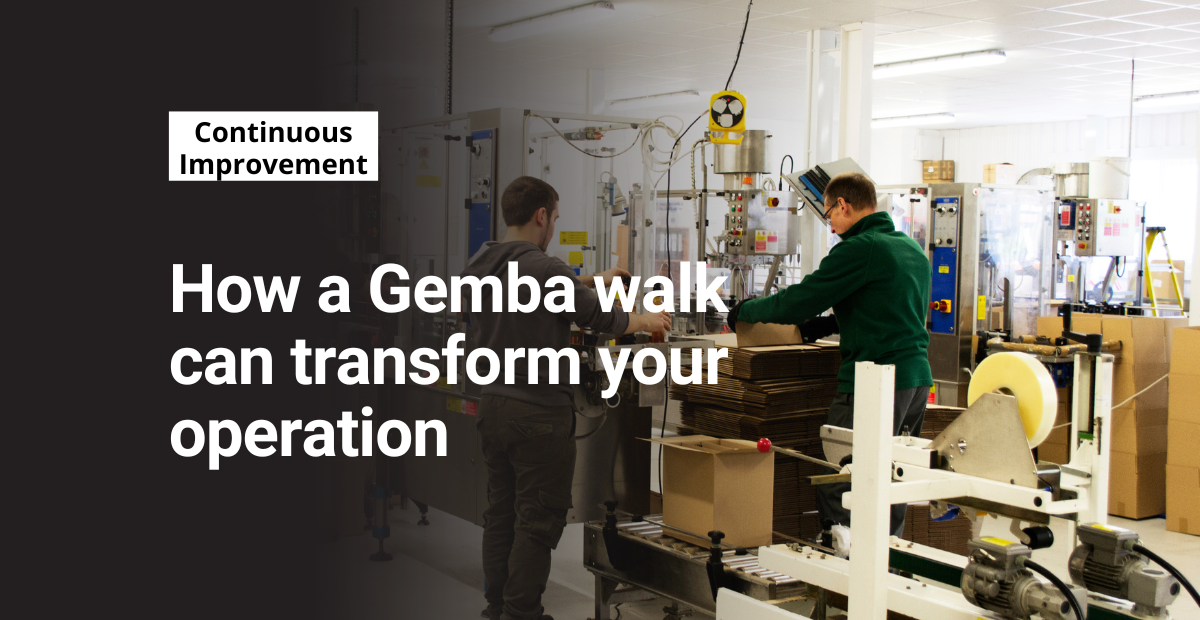Like most lean manufacturing principles, a Gemba walk is a process improvement exercise that started at the Toyota Motor Corporation. The term “Gemba” comes from a Japanese word meaning “the actual place.”
In manufacturing, this often refers to the factory floor where workers build products. In corporate spaces, it refers to the office—the place where the work gets done.
A Gemba walk is when you go out into the main work area to see the process, learn more about it, and understand where to make improvements. It involves visiting different areas of the operation to make observations and collecting information from employees.
Then, using your findings, you decide which areas need improvement and what actions you’ll take to make it happen. This simple practice, when done intentionally, can completely transform your operation in more ways than one.
Free checklist!
This Gemba walk checklist provides the outline you need to conduct an effective audit with your team.
Understanding the Gemba walk process
One of the main goals you should set for your Gemba walks is to come away with a better understanding of the process. The best way to do this is to take floor workers along with you.
Having workers involved in the Gemba walk teaches you more about the process than what you can see with your eyes. Ask workers questions about their daily tasks during the walk. Often, they’ll be more than willing to share their barriers and needs. Here are some examples of what you might ask:
- What would you change about your workstation if you could?
- Are there any tools or equipment that you hate using?
- What’s the hardest thing about your task? Easiest?
- Which areas of the process take the most time? Energy?
- Do you run into any specific issues on a regular basis?
As you observe the process, note 5S problems, ergonomics issues, and other insights you see. These notes will help you brainstorm ways to improve the process later in the Gemba walk.
Identifying opportunities
The most important goal of a Gemba walk is to find areas of opportunity within your process and take action to improve them. Here are some of the things you should look for:
- 5S systems to implement or overhaul
- Workflows
- Equipment (condition, safety, etc.)
- Up and downstream process flow
- Ergonomics
- Process waste
- System bottlenecks
In addition to helping companies identify areas of waste, inefficiencies, etc., Gemba walks also help teams learn what’s working. Take time during the Gemba walk to make note of best practices you see. In the future, you can use those practices as a benchmark for creating new processes in your operation.
Encouraging collaboration for Gemba walks
Unlike hazard assessments and process analyses, which are often done by an individual or two, Gemba walks encourage collaboration across all departments. When you include people from HR, maintenance, safety, operations, and senior leadership, you increase your overall problem-solving power.
Instead of working independently, you now have a team of people who can approach the problem from multiple perspectives. This gives you a better chance of fully understanding and solving the problem. Plus, it makes the corrective action process faster.
When each department attends the Gemba walk, you can easily explain action items and delegate them to the team with the best resources for each specific task. This effectively cuts through the red tape of trying to get multiple teams on board with the project by yourself.
[Get a copy of our Gemba board template for free!]
Documenting your Gemba walk
After Gemba meetings, you always want to document what you’ve seen and what you’ve decided. Corrective action software is a great tool for delegating Gemba-related tasks to different departments in your operation. And it also helps you track action items to make sure they’re completed.
Get the most out of this process by scheduling regular Gemba meetings and holding leaders accountable for attending them. If you do this, and you take the time to properly analyze your findings, a single Gemba walk can produce the outcome needed to completely transform your operation.




